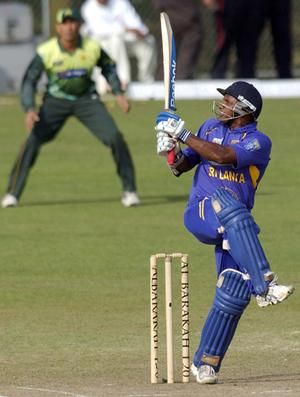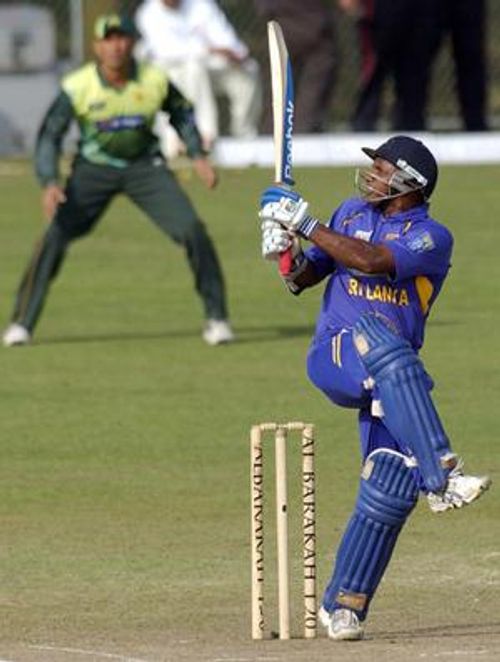
The two-new-balls rule and its effect on ODI openers!
In the summer of 1996, a new force emerged in the world of cricket. Drafted into the elite league of test-teams only fifteen years ago, a tiny nation called Sri Lanka defied all odds to win the ICC Cricket World cup. The captaincy of Arjun Ranatunga and the brilliance of Aravinda de Silva caught the attention of cricketing fans all around the world.
But what was most fascinating about Sri Lanka’s triumph was the opening-partnership strategy employed to maximum effect – the opening pair of Sanath Jayasuriya and Romesh Kaluvitarana, which changed the limited overs cricket forever.
what was most fascinating about Sri Lanka’s triumph was the opening-partnership strategy employed to maximum effect – the opening pair of Sanath Jayasuriya and Romesh Kaluvitarana, which changed the limited overs cricket forever.
Since the advent of the game, teams have been using technically superior batsmen as openers to negate the new ball threat from fast bowlers. The same philosophy followed into the limited-overs format. Although there were a few exceptions like Kris Srikanth, no international team made a conscious effort to change that philosophy. That was until the 1996 World cup, when the opening pair of Sanath Jayasuriya and Romesh Kaluvitarana took the world cricket by storm. Using their pinch-hitting abilities, the pair made utmost use of the fifteen-over field restrictions to put opposition under pressure. Bowlers, who usually looked for early wickets, were merely content to prevent the flow of runs.
Since then, their model has been replicated by various teams, thus leading to the spurt of most destructive opening batsmen of modern cricket – The Afridis, the Gilchrists, the Sehwags etc. The Indian team too employed this strategy to good effect in 2003 World Cup.
The two-ball rule
However, the introduction of a new rule by ICC which advocates using two new balls at either end in the ODI format is sure to bring in some changes at the top of teams’ batting orders. There are two factors associated with the change brought forth by ICC.
i) New & hard balls will offer better swing & bounce for the bowlers (in seaming conditions).
ii) New & hard balls will also enable batsmen to time them better.
Hence, the next generation of openers should be able to cope with the extra threat from bowlers and yet, be skilled to take full advantage of new balls through better timing. Ideally, teams will now be scouting for a player with a unique blend of stroke-making & sound technique.
Teams make changes
England and Pakistan were first to respond to ICC’s new rule by making changes at top of their batting line-ups. ECB recalled Ian Bell as an opener with an eye on the 2015 world cup in Australia. Bell repaid that faith b y scoring a stroke-filled century against West Indies; the knock that gave an account of how future ODI openers need to bat. Similarily, Pakistan opted for Azhar Ali, another player better known for technique than flamboyance. Needless to say, Azhar Ali is just coming off from an excellent series against Sri Lanka.
y scoring a stroke-filled century against West Indies; the knock that gave an account of how future ODI openers need to bat. Similarily, Pakistan opted for Azhar Ali, another player better known for technique than flamboyance. Needless to say, Azhar Ali is just coming off from an excellent series against Sri Lanka.
Another player that would fit like a missing piece in the new avatar of opener’s role will be Hashim Amla. Although considered unfit for the shorter format of the game in early part of his career as a middle order batsman, Amla has now established himself as a prolific opener in ODI cricket. Batting during field restrictions period has enabled him to make the best use of his clean-striking skills to accumulate runs at a much faster rate. No doubt, the new rule will make things even more easy for the South African.
India’s options
 Given Sachin’s imminent retirement, the Indian team has to begin the search for its Ian Bell sooner rather than later. The long-time replacement has to be identified and groomed to have any hopes of defending the world cup in Australia. One of the probable options available with the management is Ajankya Rahane. Rahane has proved his penchant for long innings, a valuable asset for an opener, through his performances in the domestic tournaments (he has scored 18 hundreds in five seasons). The talented Mumbaikar also showed glimpses of his effortless timing in this year’s IPL. The young player may be the perfect fit for opener’s new role.
Given Sachin’s imminent retirement, the Indian team has to begin the search for its Ian Bell sooner rather than later. The long-time replacement has to be identified and groomed to have any hopes of defending the world cup in Australia. One of the probable options available with the management is Ajankya Rahane. Rahane has proved his penchant for long innings, a valuable asset for an opener, through his performances in the domestic tournaments (he has scored 18 hundreds in five seasons). The talented Mumbaikar also showed glimpses of his effortless timing in this year’s IPL. The young player may be the perfect fit for opener’s new role.
Another option that Indian management can test, in case Rahane fails to deliver, is Virat Kohli. Virat Kohli is already regarded as one of the most promising players in the world. His effortless shot-making has been on display from the day he made his debut in ODI cricket. Recently, his solid technique was put to test at the bouncy tracks in Australian grounds and he responded with the utmost confidence.